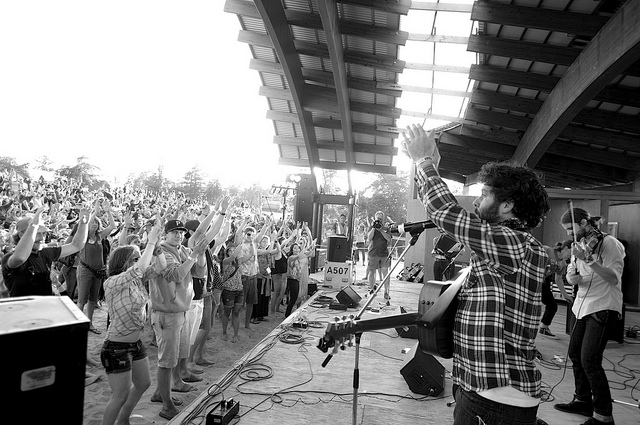
Cold climates can make people do strange things. In northern Canada, where people are cooped up inside the majority of the year, seeing little sunlight and a lot of snow, the arrival of summer heralds a burst of frenetic folly that all comes to a head the third weekend of every July.
Folk on the Rocks: Undeniably Kick-Ass
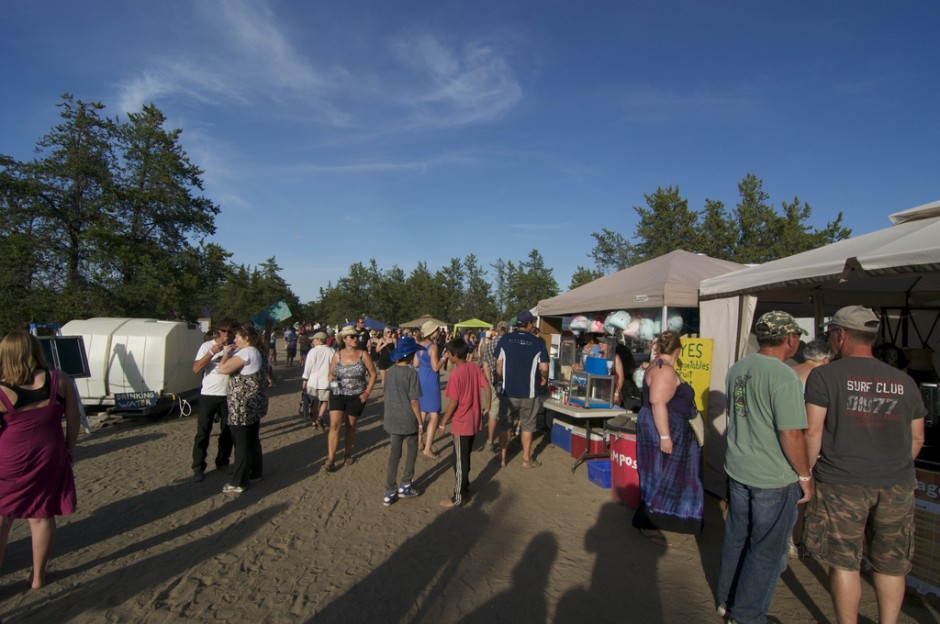
This is Folk on the Rocks, an annual music and culture festival held on the shores of a frigid lake just outside Yellowknife, Northwest Territories. Don’t know where that is? Don’t feel bad. Not many people do. Picture a map of Canada. Now look way up, above Toronto, Vancouver, even Edmonton, in the big empty part. Right in the middle (north of Alberta) on the shores of Great Slave Lake, is a small city that combines isolation and stir-crazy cabin fever into a vibrant creative community. That community comes together in all its force every summer to put on a three day festival full of northern, Canadian and international music and culture under the midnight sun.
Folk on the Rocks: The Music
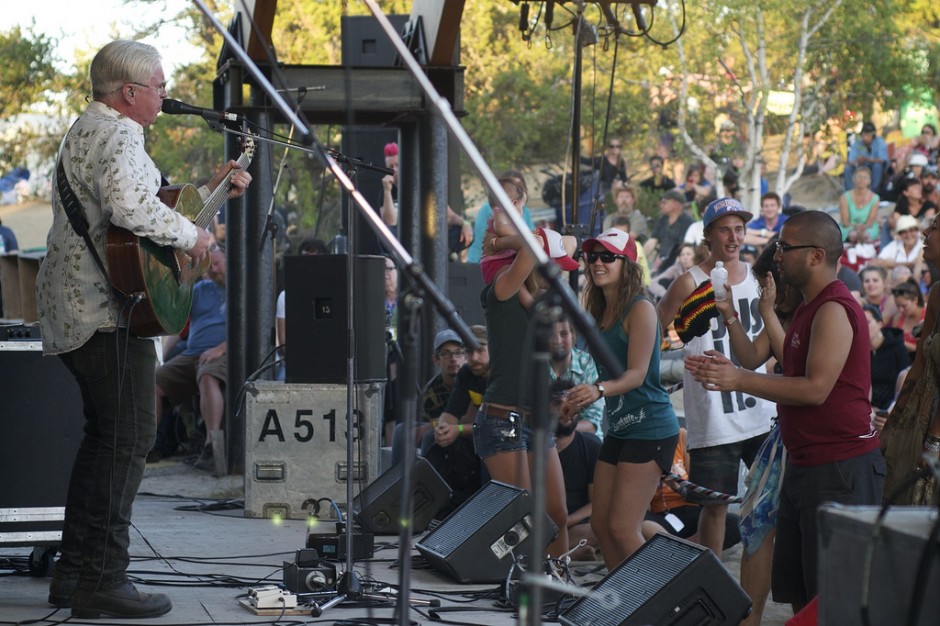
Folk on the Rocks has been held in the same place since it began as a jam spot in 1980. Yellowknifers, as they’re called, are fiercely committed to ensuring the festival stays northern but it’s easy enough to get to thanks to cheap flights on flights24.
Nationally and internationally acclaimed bands are put in collaborations with First Nations music from around the north. Onstage collaborations between unlikely bedfellows are a key part of the festival. The music of Folk on the Rocks is an eclectic mix of world and Canadian music, usually organized around a loose theme. Last year’s festival was dubbed Spark, Spur, Inspire, Stir and featured Vancouver-based indie favourite Said the Whale, Canuck country-rock icons Ron Sexsmith and Bruce Cockburn, and Inuit elder throat singers Timangia Petaulassi & Qauna Mikkigaq. Local favourites get as much love as the big acts, sometimes more, with crowds screaming their name and demanding encores into the early hours of the morning.
Folk on the Rocks: The Place
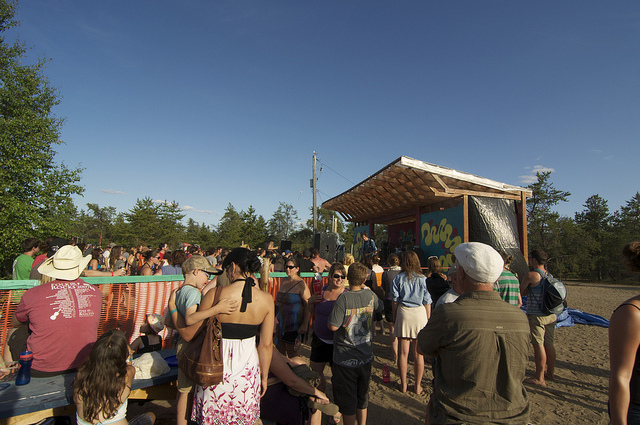
Folk on the Rocks has, in recent years, found itself on the festival road trip tour of Canada – an honour, considering the two-day each way drive on a featureless northern highway. It’s also literally as far north as you can drive on a paved road in North America – leading to the slogan “Where the road ends, the music begins”.
Outside the city proper is very little other than miles of stunted boreal trees, untouched lakes and the oldest rocks on the planet. Visitors to the festival usually use at least a few days beforehand to get out on a barely unfrozen lake in a canoe or motorboat and catch fish (usually coming up with the sizeable but less than delicious jackfish) or just get out into the True North Strong and Free. The town of 20,000 comes alive during the weekend, hotels that usually stand half-empty fill up, and in the days leading up to the festival, musicians fill the bars and public stages around the town for lead up gigs. The one thing that brings people north, more than trophy sportfishing or any festival, is the midnight sun.
Yellowknife is north of the 60th parallel, which means its is far enough north to get twenty hours of sunlight in the summer (of course, that’s traded off with only five hours of light in the winter, which is why you can pry the cold beer and Bermuda shorts out of a Yellowknifer’s cold dead hands come fall). The music goes until the early hours of morning, when twilight takes over but the streaks of dawn are already showing on the other side of the sky.
Folk on the Rocks: The Party
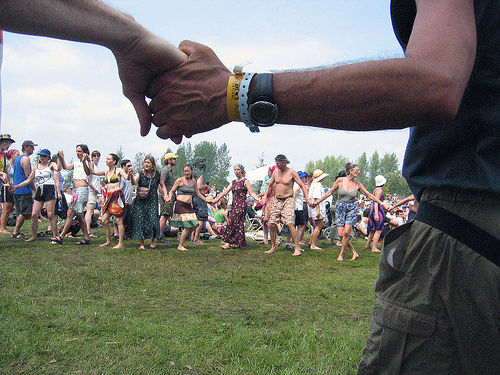
Half naked tattooed hippies swinging flaming poi, beer-soaked lumberjack types drinking their way into dance legendry, earplug wearing elders and be-Baby-Bjorn-ed families mill around together on the small grounds of the festival. As local favourites or big names throw down their final chords, the throngs relentlessly scream for an encore. As the festival shuts down, artists and the festival community will move to an exclusive location in town. This party is going all night.
Folk on the Rocks: When to Get There
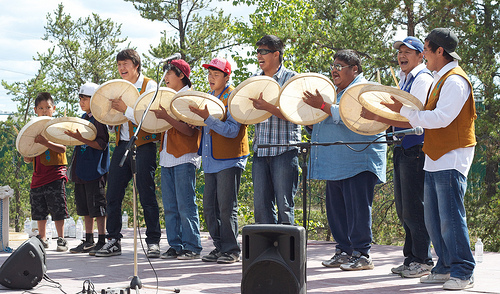
At all starts the Thursday night before, with a youth show and musicians playing pre-festival bar shows, but the real fun starts out at the site on Saturday morning. People trickle in in groups of five or six, hiding their hangovers behind sunglasses and setting up their chairs or blankets at prime locations in front of the main stage long before it opens. The beer gardens are the main hub of activity starting by 2:00 p.m. or so, with the crowd getting steadily more rabid as the afternoon goes by until it shuts in late evening and the entire crowd is herded over to the main stage for the headlining acts. The final arrival of near-darkness, fingers of light still streaking the horizon at around 2:00 a.m, is the signal for the festival closing on Sunday night. The Yellowknives Dene Drummers, undisputed highlights of the weekend, shuffle onto the stage. Nervous boys stand beside seasoned veterans in matching beaded moosehide vests and begin their song, First Nations music honed over centuries on the shores of this very lake. The traditional closing drum dance has begun. The contagious energy of the dance eventually sucks everyone in as they say goodbye to another weekend on the rocks, the late-night sun and the already shortening days of summer.